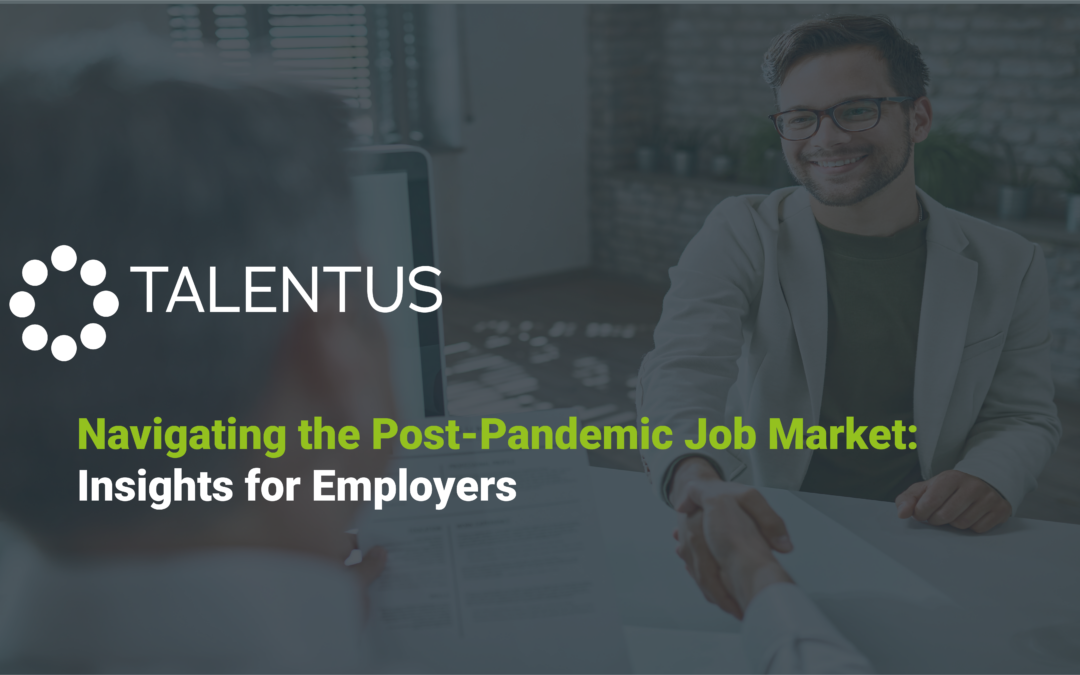The global workforce landscape has undergone a profound transformation in the wake of the COVID-19 pandemic. As the world gradually emerges from the crisis, employers are faced with new challenges and opportunities in navigating the post-pandemic job market. In this blog post, we delve into key insights to help employers adapt and thrive in this evolving employment landscape.
1. Hybrid Work Models: Redefining the Workplace
The pandemic accelerated the adoption of remote work, and the trend is here to stay. Employers are now tasked with reimagining their work models to accommodate hybrid arrangements that blend remote and in-office work. Providing flexibility while maintaining a collaborative culture will be essential for attracting and retaining top talent.
2. Skills Redefined: A Focus on Adaptability and Resilience
The disruption caused by the pandemic emphasized the need for a workforce that is adaptable and resilient. Employers should prioritize candidates with a strong aptitude for learning, problem-solving, and digital proficiency. As technologies evolve, fostering a culture of continuous learning becomes a strategic imperative.
3. Digital Transformation in Recruitment: A Competitive Edge
In a post-pandemic job market, recruitment strategies must embrace digital transformation. Leveraging artificial intelligence for candidate sourcing, virtual interviews, and data analytics can streamline the hiring process, enhance efficiency, and provide a competitive edge in securing top talent.
4. Employer Branding: Attracting Talent in a Competitive Environment
The pandemic has heightened the importance of employer branding. Job seekers are not only evaluating job offers but also the workplace culture, values, and how companies responded to the challenges of the past year. Building a positive employer brand through transparent communication, employee well-being initiatives, and a commitment to diversity and inclusion is crucial.
5. Mental Health and Well-being Initiatives: Prioritizing Employee Welfare
The pandemic underscored the significance of employee mental health and well-being. Employers must proactively address these concerns by implementing support programs, destigmatizing mental health discussions, and creating a workplace culture that prioritizes work-life balance.
6. Diverse and Inclusive Workplaces: A Business Imperative
Diversity and inclusion have moved to the forefront of organizational priorities. Employers must actively foster diverse and inclusive workplaces to attract a broad range of talent. This involves reviewing hiring practices, promoting equity, and creating an environment where all employees feel valued and supported.
7. Gig Economy Integration: Flexibility for Both Employers and Workers
The gig economy is expanding, offering a pool of on-demand talent for specific projects. Employers can leverage the gig economy to access specialized skills without committing to long-term contracts. Integrating gig workers strategically into the workforce can enhance flexibility and contribute to project success.
8. Reskilling and Upskilling Programs: Investing in Employee Growth
To address skill gaps and keep pace with evolving job requirements, employers should invest in reskilling and upskilling programs. Providing opportunities for employees to acquire new skills not only enhances their job satisfaction but also ensures that the workforce remains relevant and adaptable.
A Paradigm Shift in the Job Market
The post-pandemic job market is characterized by a paradigm shift that demands a new approach from employers. Adapting to hybrid work models, prioritizing digital transformation in recruitment, and placing a premium on employee well-being and diversity are not just trends but essential components of a successful workforce strategy. Employers who navigate these shifts with foresight, agility, and a commitment to their workforce’s holistic needs will stand poised for success in the post-pandemic era.

